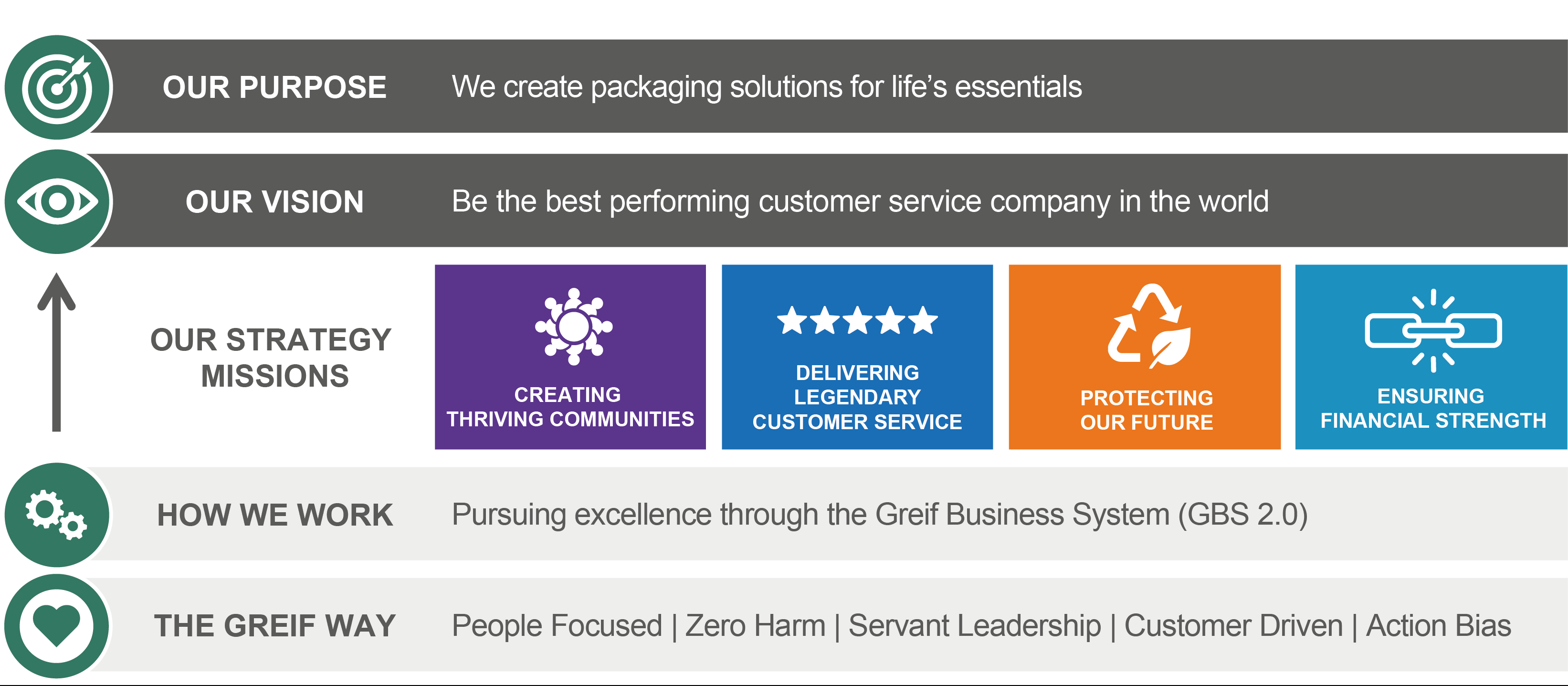Strategic Integration
Purpose, Vision & Build to Last Strategy

In 2023, we formally updated our purpose— to create packaging solutions for life’s essentials. Our Build to Last Strategy provides the foundation for bringing our purpose to life, keeping in mind the long-term future of our business and the concerns of our various stakeholders. We constructed our Build to Last Strategy on four strategic missions, each containing critical sustainability priorities.
| Our Strategy Missions |
Creating Thriving Communities |
Delivering Legendary Customer Service |
Protecting Our Future |
Ensuring Financial Strength |
|---|---|---|---|---|
| Our Build to Last Strategy |
|
|
|
|
| Our Sustainability Priorities |
|
|
|
|
One of the objectives of the Build to Last Strategy is to embed sustainability into our business strategies. In 2019, we surveyed Greif’s senior leaders to better understand how Greif uses and transforms financial, manufactured, intellectual, human, social and natural capital to create value for our company. In 2020, we conducted a gap analysis to compare our current climate management practices to the Task Force on Climate-related Financial Disclosures (TCFD) recommendations. This has enabled us to identify areas for improvement regarding our climate strategy, including taking action to improve governance, conducting scenario analyses and establishing our SBTi-aligned emissions target. For more information on our scenario analyses and science-based target, please refer to the Climate Strategy section.
We reaffirmed that our sustainability strategies are appropriately focused during our 2020 materiality assessment and are currently undertaking a similar analysis that will be discussed in our 2024 report. Our approach will review our material topics and analyze both internal and external sustainability impacts. The resulting management initiatives and strategies for each material topic will continue to be discussed in the respective sections of our report. We intend that our next double materiality assessment will continue to be an important input into our strategic plans and an important way we enhance our governance, goals, KPIs and overall management approach to our material topics.

